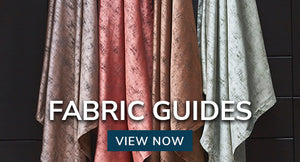A complete guide to different cushion types
When it comes to choosing new cushions it might seem like a daunting prospect especially when you consider the huge choice available. The cushions in your home are a reflection of the decorating style that you are trying to create and a beautiful selection of cushions can give the finishing touches to any room.

Choices of Fillings
To help you make your decision let’s take a look at the different types of cushions in a bit more detail. Let's start with the more widely available cushion types, these tend to be less costly because the components are man-made on a large scale.
Foam & latex fillings - Costs are kept low by using easily sourced materials and the more commonly used fillings are foam or latex. These are extensively used in the manufacture of both cushions and upholstery because foam tends to retain its shape well and is very strong and durable. It is also easily cut into virtually any shape or size and this makes it ideal for cushion fillings where several sizes might be needed.
Foam - Foam filling is made from a polyurethane mixture that is combined with other elements and left to set in a mould, it can be extremely firm or very soft depending on the mix used. Foam is very versatile and is also often chopped or minced into small pieces to give even more softness and ‘give’ to your cushion.
Hollow fibre & ball fibre - Other widely used and fairly inexpensive cushion fillings are hollow fibre and ball fibre. Again these are man made and tend to give a soft type of cushion filling. Hollow fibre is soft and springy and looks like cotton wool and ball fibre is small round fibre balls.
Feather & down - The more expensive fillings are feather and down or a combination of both. All down cushions can be very expensive and a 70% to 30% mix is more common although other percentages are available. The more down in the mix the more expensive the cushion will be. Both feather and down give soft comfortable cushions and pillows. So now we have an idea of the fillings we have to choose from let's take a look at the fabric that our cushion cover may be made from, again the choice is enormous.
Cushion covers choice
Sensitive skins - Something to bear in mind here perhaps is whether or not you or someone in the household might have sensitive skin because some man-made fabrics can aggravate such conditions. If this is the case always try to go for natural fabrics like cotton, silk or wool.
Synthetic fabrics - The majority of cushions today have either man-made or a mix of synthetic and natural fibres to keep cost to a minimum. Polyester/cotton, satin and nylon are all widely used and give a durable and washable fabric.
Natural fabrics - 100% cotton, wool and silk are examples of natural fabrics. With cotton being the most durable. Silks and pure wools are beautiful, but are not always easy to launder and may require specialist cleaning which makes them unsuitable when used the family sofa.
The purpose of your cushions
The next thing to think about is what you will be using your cushion for as this will have a bearing on the type of cushion you need. There are cushions to fit almost any room, from a sofa in the living room to cushions used in bedrooms. If you have children or pets then your cushion type will probably need to be durable, washable and perhaps stain resistant. If you just want some pretty cushions to pile on your bed then perhaps both the filling and the cover fabric could be less practical and more decorative.

Size & shape - Size and shape of your cushions is another thing to consider and again there are several sizes and shapes to choose from. Most regular cushions tend to be about 18in square, but the larger cushion has seen an increase in popularity recently and circular cushions are a stylish addition to any display.



























































